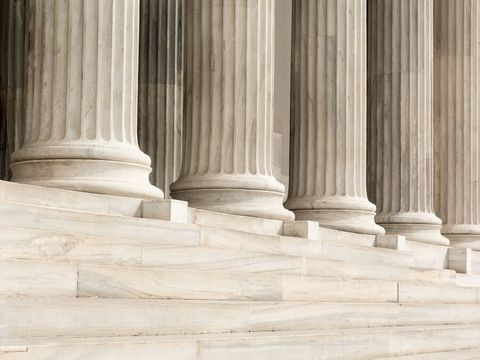Uncle Sam Shows Blockchain Some Love
Client Alert | 2 min read | 02.14.18
Today on Valentine’s Day, two subcommittees of the House Committee on Science, Space, and Technology held a joint hearing on the potential application of blockchain technology beyond cryptocurrency and financial technology. This hearing highlights the U.S. Government’s growing interest in blockchain, a Distributed Ledger Technology (DLT) that has powered platforms for secure and decentralized transactions. While its most visible exponent, Bitcoin, has been a hot topic, blockchain is gaining traction among some federal agencies as a tool of the future.
Given the sheer data demands on modern government, blockchain, which would enable what some call “democratized trust,” shows promise to cut red tape without compromising the security and integrity of government transactions. The potential use cases for blockchain are many—just to name a few: identity management, supply chain management, smart contracts, patents, and foreign aid delivery. Federal government agencies are making their own forays into this area:
- Department of Homeland Security: prove the integrity of captured data from border devices to help secure the Internet of Things (IoT);
- GSA: automating the FASt Lane process for IT Schedule 70 contracts to give end-user agencies quicker access to innovative suppliers;
- Navy: secure sharing of data within the Naval Additive Manufacturing process.
But, the government is still cautious. With a view towards cybersecurity vulnerabilities, Section 1646 of the 2018 National Defense Authorization Act requires DoD to brief on the offensive and defensive cyber applications of blockchain by the early half of this year. In practice, the government has been experimenting mostly through vehicles such as proofs of concepts and Small Business Innovation Research (SBIR) projects. These initiatives, while distinct from traditional procurements, provide low-cost opportunities for entry. Industry should be on the lookout for ways to engage the government and articulate viable uses of blockchain for particular mission requirements.
Contacts
Insights
Client Alert | 5 min read | 12.12.25
Eleventh Circuit Hears Argument on False Claims Act Qui Tam Constitutionality
On the morning of December 12, 2025, the Eleventh Circuit heard argument in United States ex rel. Zafirov v. Florida Medical Associates, LLC, et al., No. 24-13581 (11th Cir. 2025). This case concerns the constitutionality of the False Claims Act (FCA) qui tam provisions and a groundbreaking September 2024 opinion in which the United States District Court for the Middle District of Florida held that the FCA’s qui tam provisions were unconstitutional under Article II. See United States ex rel. Zafirov v. Fla. Med. Assocs., LLC, 751 F. Supp. 3d 1293 (M.D. Fla. 2024). That decision, penned by District Judge Kathryn Kimball Mizelle, was the first success story for a legal theory that has been gaining steam ever since Justices Thomas, Barrett, and Kavanaugh indicated they would be willing to consider arguments about the constitutionality of the qui tam provisions in U.S. ex rel. Polansky v. Exec. Health Res., 599 U.S. 419 (2023). In her opinion, Judge Mizelle held (1) qui tam relators are officers of the U.S. who must be appointed under the Appointments Clause; and (2) historical practice treating qui tam and similar relators as less than “officers” for constitutional purposes was not enough to save the qui tam provisions from the fundamental Article II infirmity the court identified. That ruling was appealed and, after full briefing, including by the government and a bevy of amici, the litigants stepped up to the plate this morning for oral argument.
Client Alert | 8 min read | 12.11.25
Director Squires Revamps the Workings of the U.S. Patent Office
Client Alert | 8 min read | 12.10.25
Creativity You Can Use: CJEU Clarifies Copyright for Applied Art
Client Alert | 4 min read | 12.10.25
Federal Court Strikes Down Interior Order Suspending Wind Energy Development




